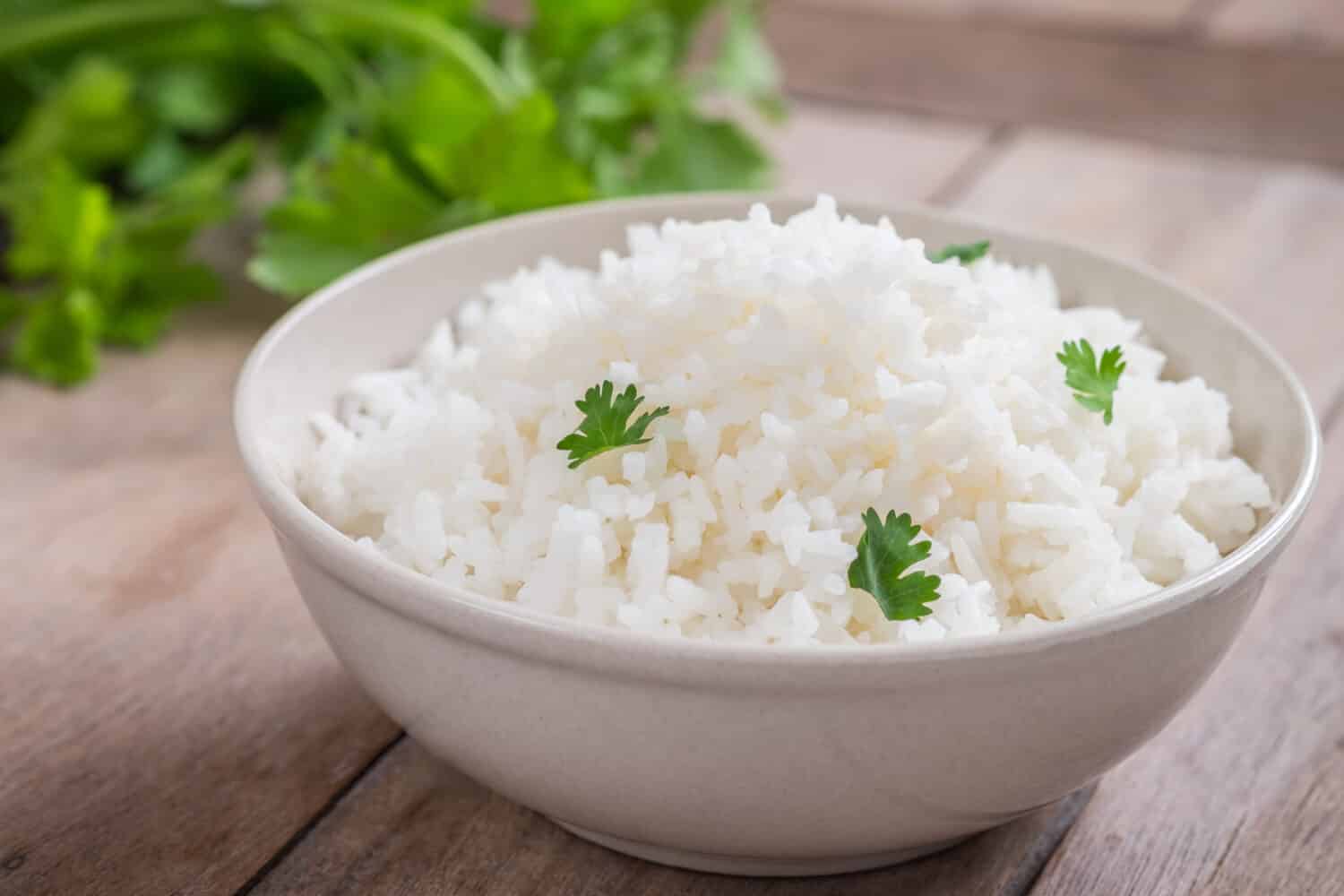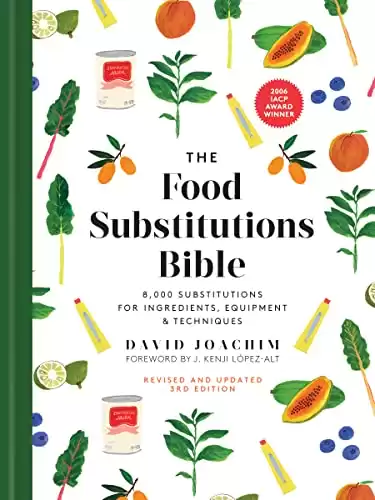White rice is a food staple around the world, but how healthy is it actually? Brown rice, which retains the bran and germ, is more nutritious since it also retains more fiber and essential nutrients. On the other hand, white rice undergoes a milling process that removes the bran and germ, thereby stripping away its fiber and nutrients. However, many varieties of white rice are enriched to restore some of its nutritional value.
We will explore the health benefits and downsides of white rice and examine the scientific evidence regarding its healthfulness. Furthermore, we will note the nutritional content of this popular grain. Finally, we will suggest some healthy ways to incorporate white rice into your diet.
What Are the Health Benefits of White Rice?
One key benefit is folate. Folate, a nutrient that aids heart health, is abundant in white rice. A serving of rice contains twenty percent of your daily folate requirements. Consuming foods with folate lowers your chance of heart attack and stroke.
- The must-have convenient reference guide for every home cook!
- Includes more than 8,000 substitutions for ingredients, cookware, and techniques.
- Save time and money on by avoiding trips to grab that "missing" ingredient you don't really need.
Unenriched white rice contains some vitamins and minerals, such as protein, selenium, and manganese—which is good for bone health. If manufacturers enrich white rice, they add extra nutrients to it. These added nutrients greatly enhance the health benefits of white rice. Be sure to examine the label on the rice to determine if the brand is enriched or unenriched.
White rice is easy on the digestive system, which is why it is a good food to eat after you have been sick or if you are eating a late dinner. It is a gentle and bland food that is easy to digest, making it ideal for soothing an upset stomach. It also has low fiber content, so it will not irritate your intestinal system or cause diarrhea.
Finally, white rice is a good source of energy because it digests quickly because of the lack of fiber. While this is not a good thing for diabetics, for athletes and weightlifters, it means they often eat white rice before workouts or training for that energy boost.
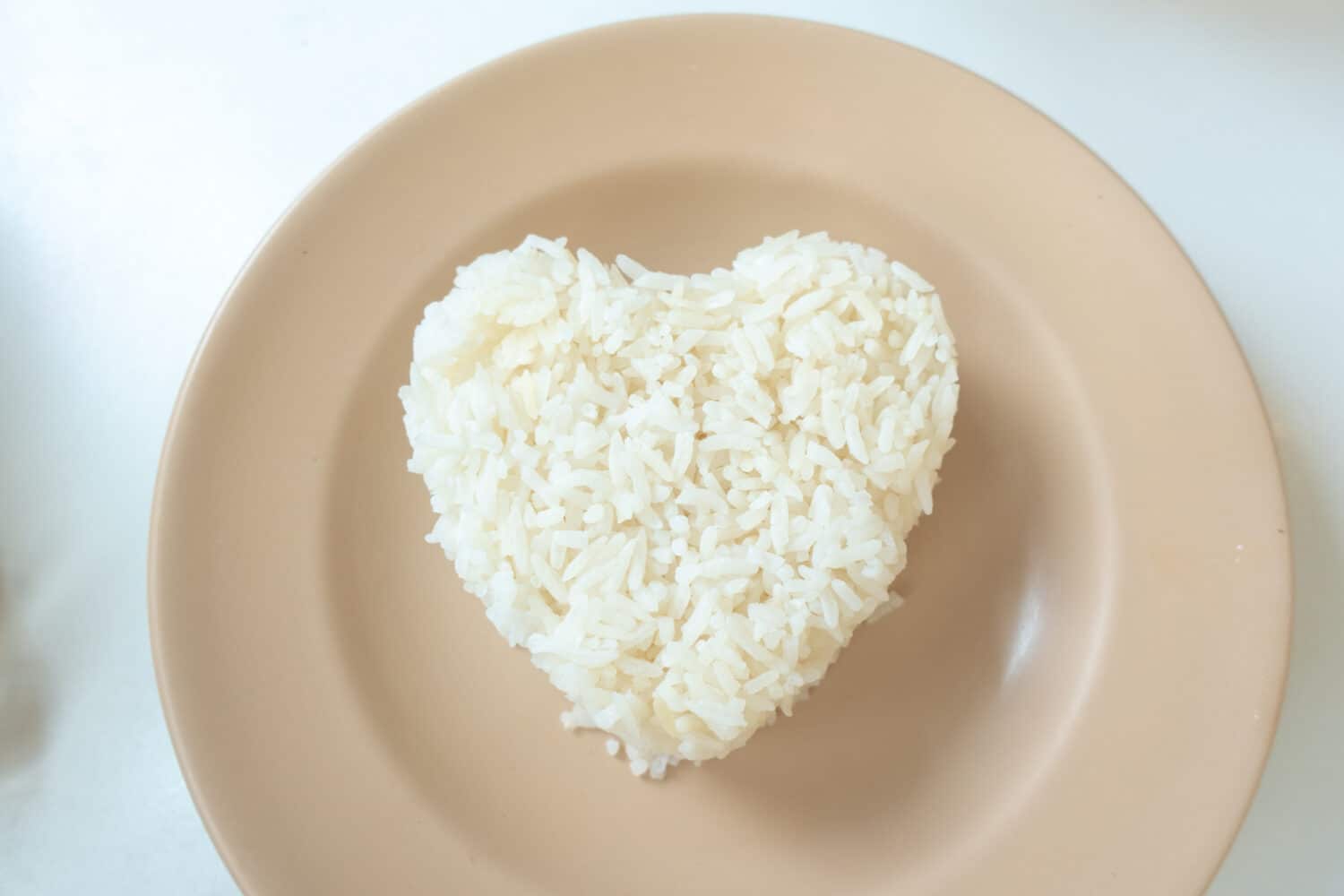
©HugYou/Shutterstock.com
What Is the Nutritional Value of White Rice
Below is a table revealing the nutritional content of a three-ounce (100-gram) serving of white rice based on the percentage of daily values recommended by the FDA.
| Enriched White Rice | Unenriched White Rice | |
|---|---|---|
| Calories | 123 | 123 |
| Carbs | 26g | 30g |
| Fat | .04g | .04g |
| Fiber | .09g | .09g |
| Folate | 20% | 1% |
| Iron | 10% | 1% |
| Niacin | 12% | 12% |
| Vitamin B6 | 8% | 8% |
One good thing about white rice, regardless of its type, is that it does not contain gluten. However, manufacturers may add seasonings to rice mixes that can contain gluten. If you do have gluten allergies, be sure to check the packaging to ensure the rice has remained gluten-free.
The Key Benefits of White Rice
Here is a quick summary of the overall benefits of white rice.
- White rice is incredibly versatile, which is precisely why it is a staple in many kitchens. You can use it as a main dish, side dish, or add it to casseroles and soups.
- It is a popular and affordable grocery item. If you are looking to stretch your family's budget, rice is an affordable food that can feed the whole family.
- Enriched rice is an excellent source of vitamins, minerals, and energy for the body.
- White rice is gluten-free, making it safe to consume for those with celiac disease or gluten intolerance. Just be sure to double-check the labels to make sure nothing has been added to the rice to change this.
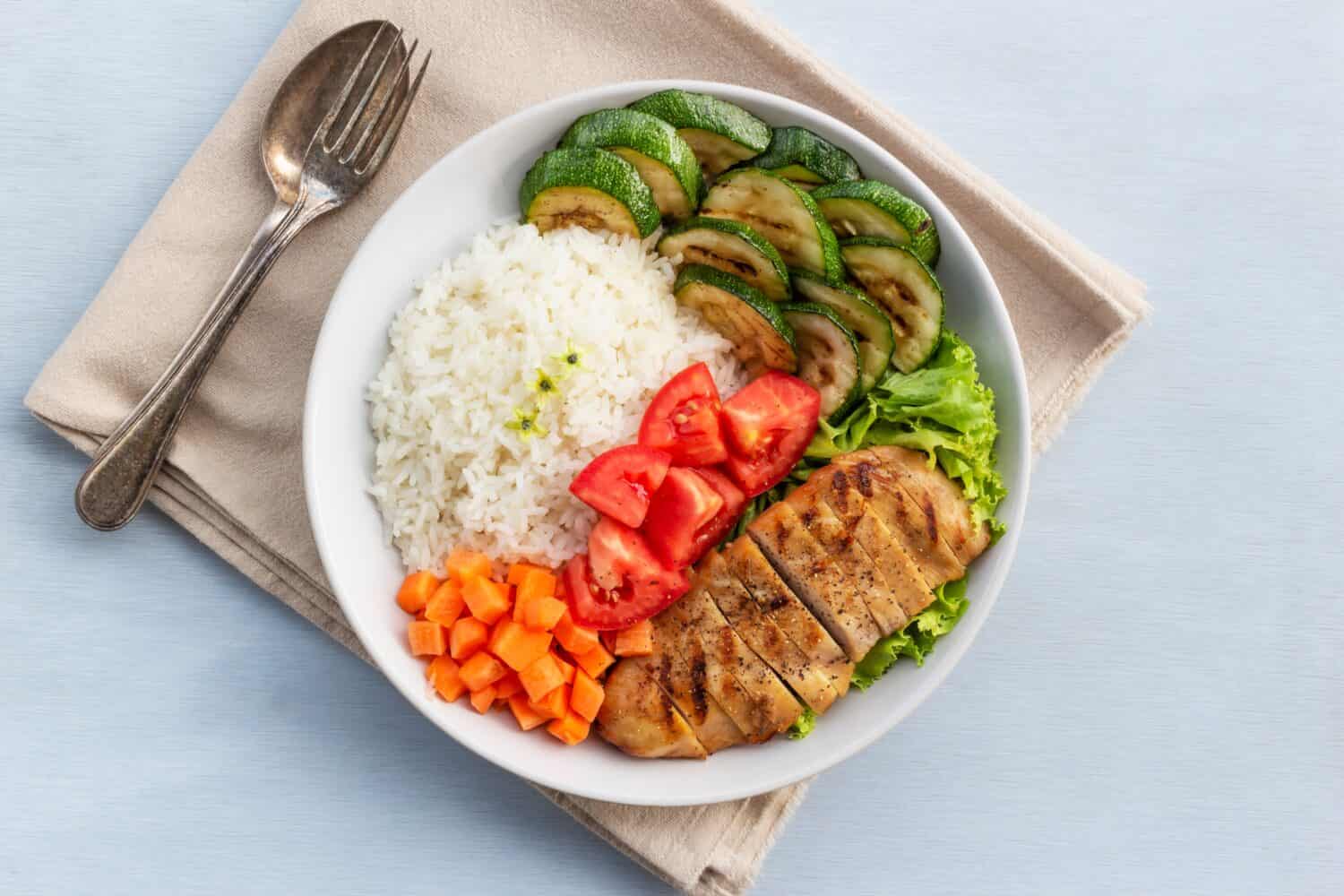
©nnk/Shutterstock.com
What Are the Risks of White Rice?
Now, it is time to examine the downsides of white rice. One of the biggest drawbacks to white rice is its high glycemic index (GI), which measures how quickly the body converts carbohydrates into sugar. If a food has a high glycemic index, it can cause sugar spikes, which is a cause of diabetes. Unfortunately, white rice has a very high GI index.
Since white rice is more processed, there are a lot of empty calories in unenriched white rice. And since it is a highly-refined carbohydrate, it can cause obesity if eaten in great quantities. Research also links refined carbohydrates to chronic disease.
Studies have also revealed that some rice contains high levels of arsenic, which may cause cancer and heart disease. This arsenic contamination is due to rice absorbing arsenic from the soil when it is growing.
However, washing rice before cooking or using a lot of water to make the rice will lower the risk of arsenic contamination. It is worth noting that basmati and jasmine rice have the lowest levels of arsenic contamination among rice varieties.
- The must-have convenient reference guide for every home cook!
- Includes more than 8,000 substitutions for ingredients, cookware, and techniques.
- Save time and money on by avoiding trips to grab that "missing" ingredient you don't really need.
Arsenic contamination is especially dangerous to small children because of their smaller body weight, so dieticians advise that rice milk should not be given frequently to children under the age of five years old.
Finally, if you leave cooked white rice out at room temperature for too long, harmful bacteria can grow on it. So, it is important to be careful when eating leftovers. If you eat the contaminated rice, you may end up with food poisoning. It is very important to store leftover rice quickly in an airtight container in the refrigerator.
The Key Downsides of White Rice
Here is a quick overview of the downsides of white rice.
- Low fiber and dense starch can cause digestive issues such as constipation, heart burn, and stomach ulcers.
- White rice has a high glycemic index (GI), which is known to cause diabetes.
- White rice is susceptible to arsenic contamination if grown in certain areas of the world. Too much arsenic in your food leads to a greater chance of developing cancer and heart disease.
- Bacteria on leftover white rice grows quickly and will cause food poisoning.
Healthy Ways to Enjoy White Rice
If you eat white rice frequently, there are ways to boost its health benefits. Here are a few ideas to consider for your next rice meal.
- Add non-starchy vegetables, like peas and beans, to your white rice. They will not only add dietary fiber but also calcium and vitamin C to your meal.
- Fish is also a great pairing with white rice as it is a major source of antioxidants and healthy omega-3 fatty acids known to improve heart health.
- Researchers have discovered the ASC Cooking Method, which is a healthier way to make white rice. Coconut oil is added to the saucepan while cooking and the cooked rice is left in the refrigerator overnight. You reheat the rice and eat it the next day. Researchers say that the coconut oil changes the starch content, and leaving the rice in the fridge gives the coconut oil more time to work its magic.
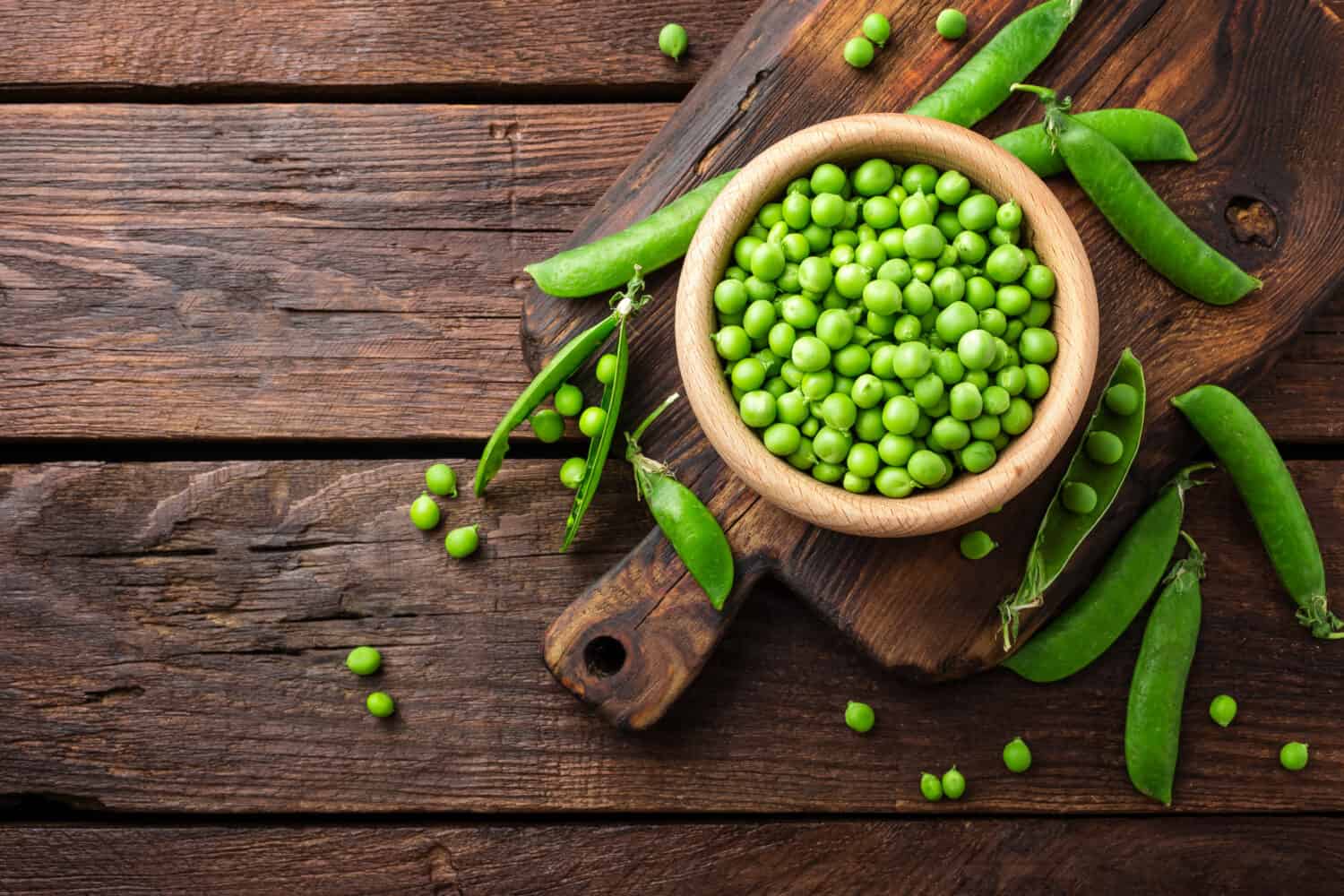
©Sea Wave/Shutterstock.com
Final Thoughts
Whether white rice is healthy or not depends on various factors, including whether the rice is enriched or unenriched. Unenriched white rice has been processed in a way that strips much of its nutritional value. Enriched rice has more vitamins and minerals, so it is the healthier option.
Additionally, there are ways to improve the health benefits of white rice, such as serving it with non-starchy vegetables or fish. Overall, though, consuming white rice in moderation, especially as part of a well-rounded diet, is fine. Moderation and balanced eating is the key.
Recipe Card
There are a vast array of recipes that include white rice, and there are so many different ways you can incorporate it into your meals. Here's one that you are sure to enjoy:
Print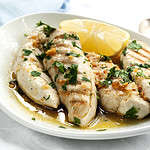
Lemon Chicken with White Rice
Ingredients
- 2 cups long grain white rice
- 2 cups water
- 3 Tablespoons butter, cut into small cubes
- 4 boneless, skinless chicken breasts (1 pound total)
- 1/2 cup fresh lemon juice
- 2 teaspoons lemon zest
- 1 teaspoon garlic
- 1 whole lemon
Instructions
- Place rice and water into slow cooker.
- Place cubed butter evenly into rice and water.
- Place chicken pieces into the slow cooker, on top of rice. Pour lemon juice over chicken. Sprinkle lemon zest and garlic evenly over top.
- Cut whole lemon into thin slices. Arrange slices on top of each piece of chicken.
- Cover and cook on low for 6 to 8 hours.
The image featured at the top of this post is ©Amarita/Shutterstock.com.
- The must-have convenient reference guide for every home cook!
- Includes more than 8,000 substitutions for ingredients, cookware, and techniques.
- Save time and money on by avoiding trips to grab that "missing" ingredient you don't really need.
